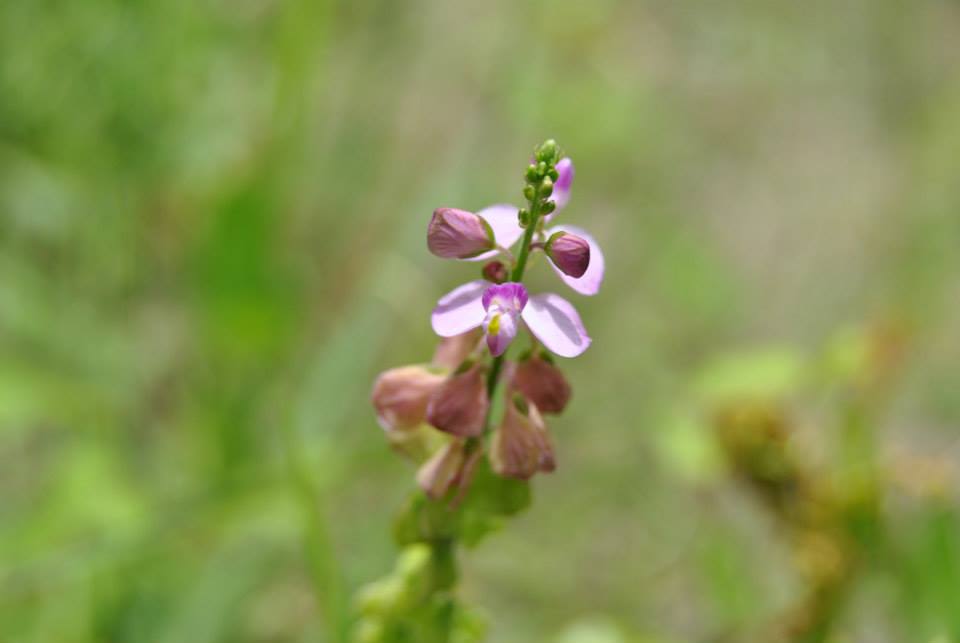Difference between revisions of "Polygala grandiflora"
(→Seed dispersal) |
|||
| Line 34: | Line 34: | ||
===Seed dispersal=== | ===Seed dispersal=== | ||
| + | This species is thought to be dispersed by ants and/or explosive dehiscence. <ref> Kirkman, L. Katherine. Unpublished database of seed dispersal mode of plants found in Coastal Plain longleaf pine-grasslands of the Jones Ecological Research Center, Georgia.</ref> | ||
| + | |||
===Seed bank and germination=== | ===Seed bank and germination=== | ||
===Fire ecology=== <!--Fire tolerance, fire dependence, adaptive fire responses--> | ===Fire ecology=== <!--Fire tolerance, fire dependence, adaptive fire responses--> | ||
Revision as of 15:10, 4 September 2018
| Polygala grandiflora | |
|---|---|

| |
| Photo taken by Michelle M. Smith | |
| Scientific classification | |
| Kingdom: | Plantae |
| Division: | Magnoliophyta – Flowering plants |
| Class: | Magnoliopsida – Dicotyledons |
| Order: | Polygalales |
| Family: | Polygalaceae |
| Genus: | Polygala |
| Species: | P. grandiflora |
| Binomial name | |
| Polygala grandiflora Walter | |

| |
| Natural range of Polygala grandiflora from USDA NRCS Plants Database. | |
Common name: Showy milkwort
Contents
Taxonomic notes
Description
Distribution
Ecology
Habitat
This species has been found growing within calcareous glades, upland pine woods, longleaf pine-scrub oak sand ridges, savannas, and sandhill communities (Deyrup et al 2002, FSU Herbarium). It has also been observed growing in swales of slash pine plantations (FSU Herbarium).
Phenology
This species has been observed flowering and fruiting in May (FSU Herbarium).
Seed dispersal
This species is thought to be dispersed by ants and/or explosive dehiscence. [1]
Seed bank and germination
Fire ecology
Flowers within two months of burning in early summer (Robertson).
Pollination
The following Hymenoptera families and species were observed visiting flowers of Polygala grandiflora at Archbold Biological Station (Deyrup 2015):
Megachilidae: Anthidiellum notatum rufomaculatum
Use by animals
Deyrup observed this bee, Anthidiellum notatum rufimaculatum, on P. grandiflora (Deyrup et al 2002).
Diseases and parasites
Conservation and Management
Cultivation and restoration
Photo Gallery
References and notes
Deyrup, M.A. and N.D. 2015. Database of observations of Hymenoptera visitations to flowers of plants on Archbold Biological Station, Florida, USA.
Deyrup, M. J. E., and Beth Norden (2002). "The diversity and floral hosts of bees at the Archbold Biological Station, Florida (Hymenoptera: Apoidea)." Insecta mundi 16(1-3).
Florida State University Robert K. Godfrey Herbarium database. URL: http://herbarium.bio.fsu.edu. Last accessed: June 2014. Collectors: Ann F. Johnson, Wilson Baker, Roy Komarek, R. A. Norris, Robert K. Godfrey, A. Gholson Jr., Chris Cooksey, Kevin Oakes, and Lisa Keppner. States and Counties: Florida: Calhoun, Gadsden, Jackson, Leon, Sarasota, Wakulla, and Washington. Georgia: Grady and Thomas.
Robertson, Kevin M. 2014. Personal observation at Pebble Hill Plantation, Grady County, GA.
- ↑ Kirkman, L. Katherine. Unpublished database of seed dispersal mode of plants found in Coastal Plain longleaf pine-grasslands of the Jones Ecological Research Center, Georgia.